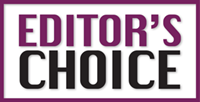
Self-rating by people with voice disorders and perceptual assessments by speech and language therapists are generally quicker and cheaper than acoustic voice analysis. Reports, with small sample sizes and mixed participant groups, on whether these measures are associated have demonstrated ambiguous outcomes. This study examines the correlation between these measures across 574 teachers working in schools in Colombia. Participants were asked to complete a single rating of their own voice and provide two voice samples (reading aloud and one sustained vowel sample). Voice samples were audio recorded and rated by a blinded experienced speech and language therapist using the GRBAS rating scale. Vowel samples were also analysed using three acoustic parameters (fundamental frequency, jitter and shimmer). The study found little to no agreement between any of the measures used. The authors highlight that each measure is examining a different aspect of the disorder. They propose these three types of measures should continue to be used as complimentary assessment tools in the clinical setting. In the NHS, measures such as the self-reported measures are often best used to guide prioritisation for intervention, yet instrumental measures can provide more valid and rigorous outcome measures to demonstrate effectiveness of these interventions.



